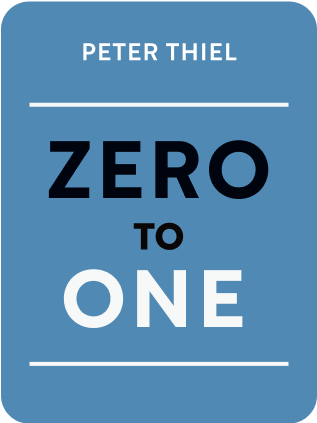

This article is an excerpt from the Shortform summary of "Zero To One" by Peter Thiel. Shortform has the world's best summaries of books you should be reading.
Like this article? Sign up for a free trial here .
What is a perfect competition market structure? Does it really exist?
Perfect competition market structure is the idea that all businesses sell the same product or service, without any clear advantages. Peter Thiel argues that perfect competition market structure can’t exist, and uses its nonexistence to make a case for monopolies.
Perfect Competition Market Structure Is a Myth
Anyone considering a startup should ask: “What valuable company hasn’t been built yet?”
Some companies create value without being valuable (profitable), but that isn’t enough to be successful (sustainable). A company has to accrue some of the value it creates.
Airlines in 2012 were a prime example of companies that create value without keeping much—they served millions of passengers, creating value of hundreds of billions of dollars, but made little money per passenger. While airfare averaged $178 each way, they made 37 cents per passenger trip. In contrast, Google created less value but brought in far more money—more than 100 times the airline industry’s profit margin that year. Google is worth more than three times the airline industry.
The difference is their markets: the airline industry is competitive, while Google benefits from monopoly status.
Perfect Competition Market Structure
Economists have two models for markets: “perfect competitions” and monopoly; perfect competition market structure is considered to be the ideal.
Perfectly competitive markets are balanced: supply matches demand. The products are basically the same regardless of which company sells them. The price is whatever the market determines. If there’s a chance to make money, new companies enter the market, increase supply, and push prices down, thereby eliminating profits. If too many companies enter the market, some fail and prices rise again. In perfect competition market structure, no one profits in the long run.
Monopoly
Monopoly is the opposite of perfect competitions. While competing companies must sell their product at the market price, a monopoly owns the market and sets the price.
However, monopolies aren’t all the same: market domination can be achieved in different ways, some more defensible than others—for instance, bullying, acting illegally, by government sanction, or by innovating. In this book, monopoly refers to a company that’s so good at doing something that no other company can duplicate it. For example, no other company has competed with Google in search since the 2000s, when it outdistanced Microsoft and Yahoo!
Americans equate competition with capitalism, which is seen as the opposite of socialism. But competition and capitalism are really opposites—capitalism is the accumulation of profits, but in perfect competition market structure, profits disappear.
To succeed as an entrepreneur, you need to create something new with long-term value, rather than competing with everyone else to sell the same thing.
Lying about Competition
To protect their interests, companies tend to lie about their market status so that all businesses seem similar. However, most businesses are closer to one extreme or the other—perfect competitions or monopoly—than it appears from what they say.
Monopolies lie because acknowledging their market control attracts attention (audits) and attacks. To keep monopoly profits rolling in, they downplay their status by claiming nonexistent competition. For example, Google distracts attention from its monopoly status in search, by emphasizing its competition in consumer tech products, where Google owns only a small share of the overall market.
Non-monopoly companies say the opposite, claiming to be in a class by themselves. Entrepreneurs like to downplay their competition; they define their market so narrowly that they stand out. For instance, a restaurant might try to focus on the way its food is different. It might claim to have a unique recipe or might focus on being the only Indian restaurant on the block, even though there is a wide variety of other ethnic restaurants in the neighborhood.
But when you focus on inconsequential differences or ignore the fact that you’re competing with all the different kinds of restaurants customers in your neighborhood could choose from, you’re not addressing your real challenges and are likely to fail.
Monopolies are good for society. While it may seem counterintuitive, they can be more ethical, treat workers with greater consideration, and create more value than companies locked in competitions do.
Perfect competition market structure is static—and a state of equilibrium or stasis eventually leads to death. In competition, one undifferentiated business is simply replaced by another.
So can perfect competition market structure even exist? And if it does, does it help? While it’s a helpful theory, perfect competition market structure doesn’t always play out in real life, and the concept has many disadvantages.

———End of Preview———
Like what you just read? Read the rest of the world's best summary of Peter Thiel's "Zero To One" at Shortform .
Here's what you'll find in our full Zero To One summary :
- Why some companies genuinely move the world forward when most don't
- How to build a company that becomes a monopoly (and why monopolies aren't bad)
- Silicon Valley secrets to selling products and building rockstar teams






